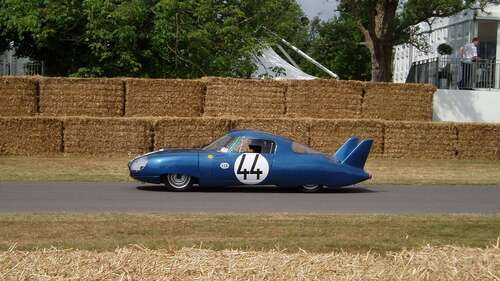
Both cars entered the ’64 Le Mans, but neither car finished. Ferraris took the top three spots (and five of the top six), and Porsche took five of the next six. Rene Bonnet’s Aerodjet came in 23rd (after starting in 53rd), completing 260 laps. The Panhard CD LM64-01 ran for 13 hours (124 laps) before gearbox problems halted its race, while the LM64-02 ran for 10 hours (77 laps) before its engine failed.
Neither car raced again until both took part in the 2004 Le Mans Classic during the 40th anniversary of their only race. Deutsch went on to create more cars, and the passenger version of the Panhard was built until 1967 when Panhard was taken over and merged into Citroen. Deutsch would later work on the equally iconic Porsche 917 race car, which had a similarly long tail and low drag coefficient.
Today, the Panhard CD LM64 is regarded as one of the most recognizable prototypes ever to race at Le Mans and one of the most important because it is, without exception, the most aerodynamic car of all time. With a coefficient of drag of just 0.12, it’s sleeker than every automobile ever made, including the Volkswagen XL1 (Cd 0.186), McLaren Speedtail (Cd 0.278), every Tesla model, and even built-for-speed racers appreciate the Mk1 Ford GT40 (0.35).
It’s ironic then that French automobile designer Charles Deutsch, whose initials (CD) are in the car’s name, also stands for drag coefficient (Cd).

